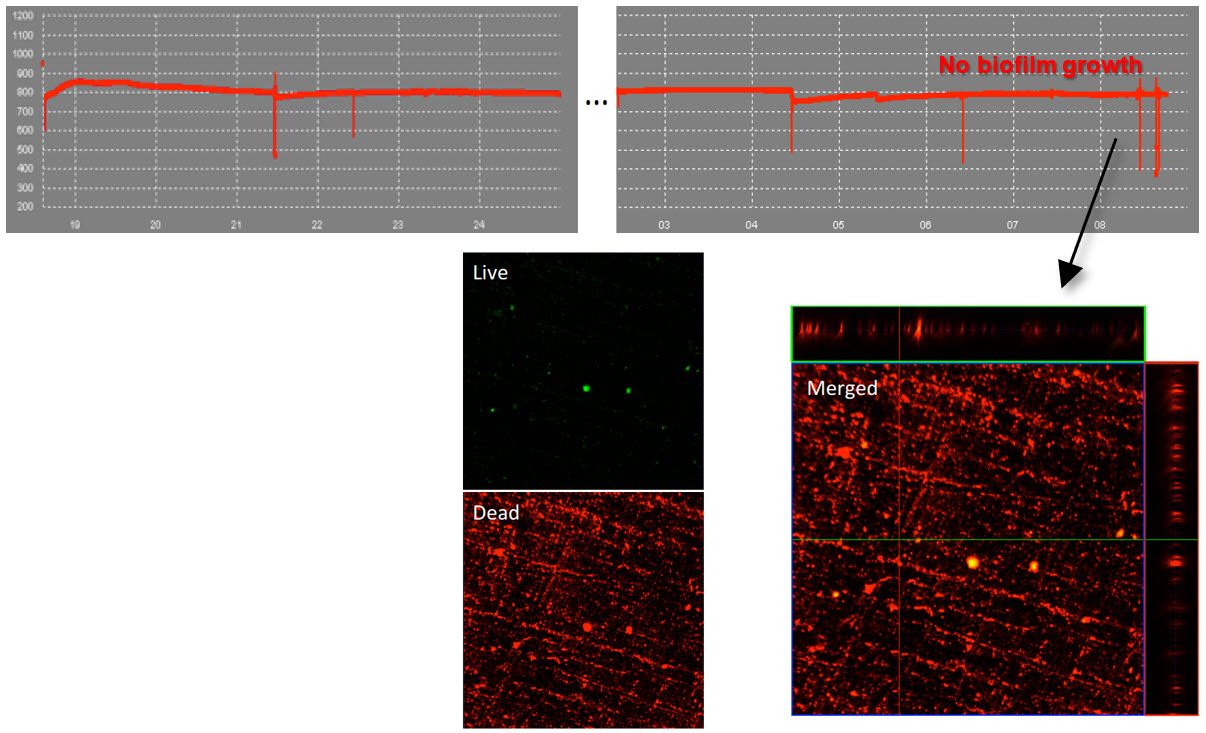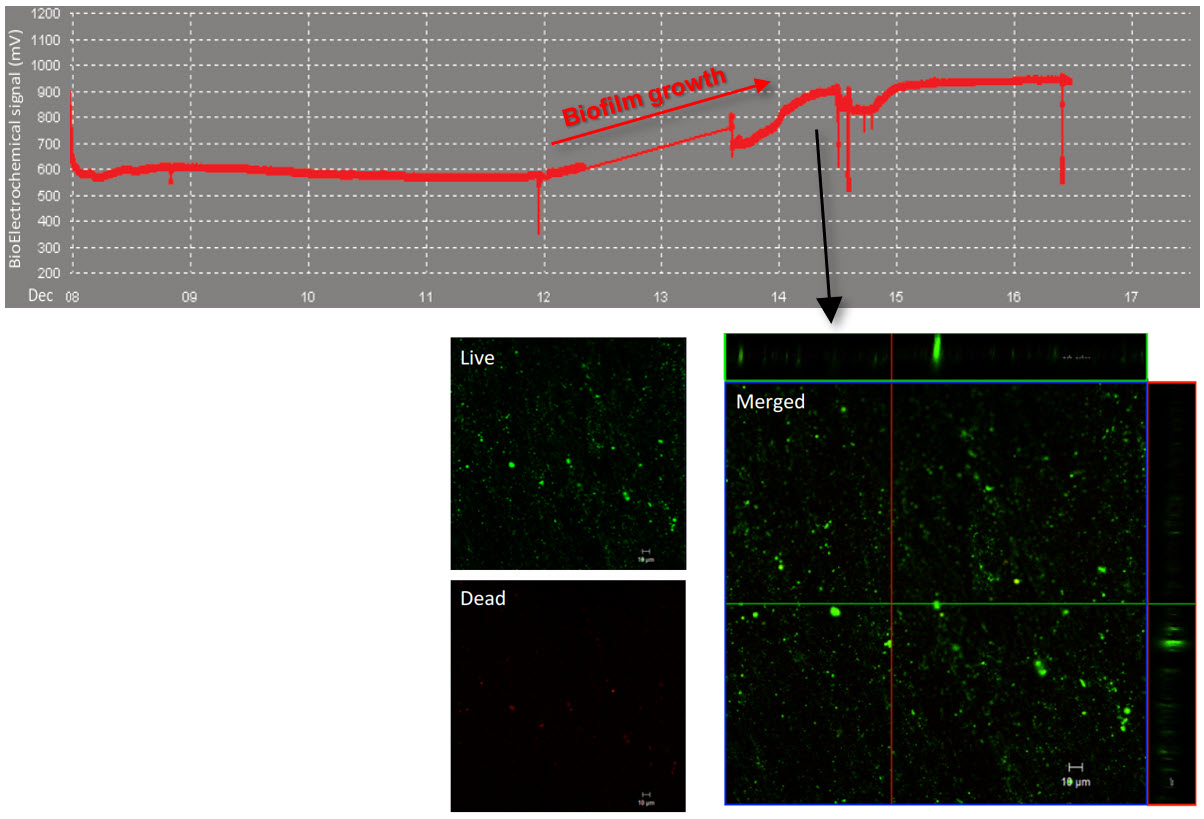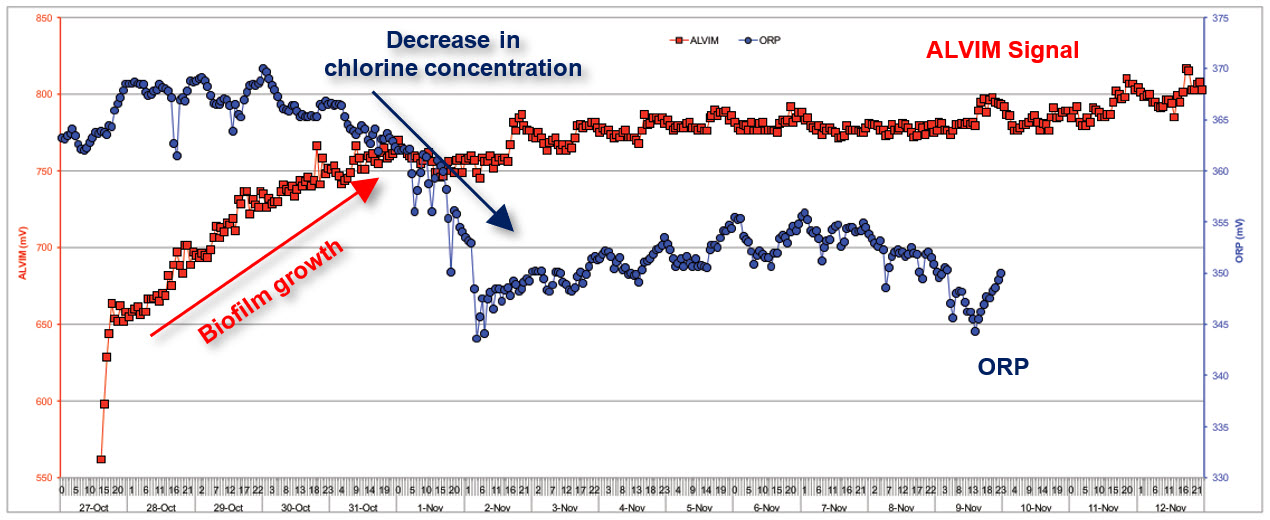Water Distribution Networks [Download this application case as PDF file]
Bacterial growth on surfaces in contact with water (a phenomenon usually known as “biofilm”) is a major problem in water distribution networks. Indeed, such bacterial layer is the ideal environment for the proliferation of pathogens. Moreover, biofilm is much more resistant (up to 1000x) to biocides and sanitation than free-floating bacteria, and its resistance increases with time. For this reason, to prevent the proliferation of harmful microorganisms, it is important to eliminate biofilm during its initial phase of development. Chlorine is usually dosed in drinking water to limit bacterial growth but, in most cases, its real effectiveness against biofilm is not checked.

In this Project, the ALVIM Biofilm Monitoring System was tested both in laboratory and in a full-scale drinking water distribution network.
In a first laboratory test, the ALVIM Biofilm Sensor was immersed in tap water with residual chlorine (see figure below). As it can be seen in the graph, no biofilm growth was detected during the three weeks of testing. At the end of this period, coupons immersed in the same tank were analyzed by means of epifluorescence microscopy (live-dead staining). The analysis confirmed that nearly all bacteria on coupons were dead.

In a second laboratory test, the ALVIM Biofilm Sensor was immersed in tap water with no residual chlorine (see figure below). As it can be seen in the graph, after 4-5 days biofilm started to grow. At the end of this period, coupons immersed in the same tank were analyzed by means of epifluorescence microscopy (live-dead staining). The analysis confirmed that nearly all bacteria on coupons were alive.

In the last trial, the ALVIM Sensor was installed in a full-scale drinking water distribution network. In this case, biofilm growth was detected after just a few days (see figure below). This is not uncommon because, as previously mentioned, drinking water chlorination is not always enough to kill biofilm. It is interesting to note that, when biofilm grew, chlorine concentration decreased, as the ORP value (measured by a dedicated probe) showed. Indeed, chlorine is "consumed" by the organic matter (including biofilm) that can be found in the piping. The more the biofilm, the lower the residual chlorine is.

This testing demonstrated the reliability of ALVIM Biofilm Sensor, and its capability of detecting bacterial growth since the very first phase in drinking water systems and distribution networks. Moreover, the ALVIM System proved to be a powerful tool for checking and adjusting biocide/sanitation treatments, on line and in real time.
|
Do you have a similar problem with biofilm?
|





